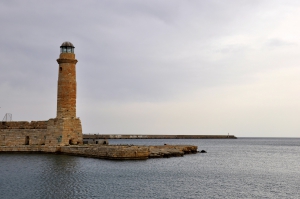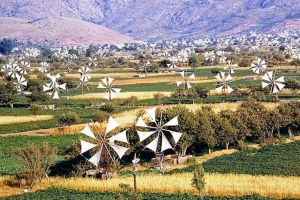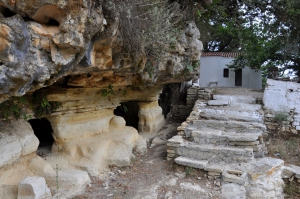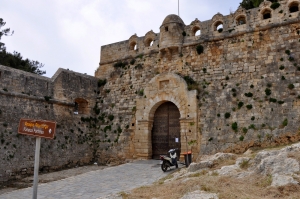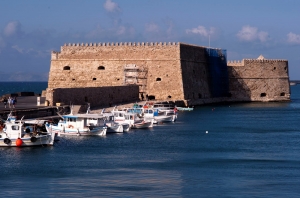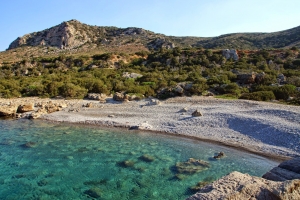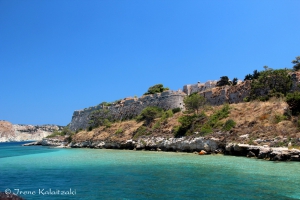The lighthouse of the Venetian harbor of Rethymno is the second largest remaining Egyptian lighthouse in Crete, after the lighthouse of Chania harbor. It is built on the edge of the old sea wall of Rethymnon and it can be accessed very easily.
Lassithi plateau hosted, after the 1950s, the first, largest and most beautiful wind farm in the world with approximately 13000 windmills with a total installed power of above 5MW. The windmills operated as pumping engines above the wells of the plain to water the crops in summer.
Ancient Lappa was built near the current town of Argyroupolis, located 27km south of Rethymno. The area is now famous for its springs with waterfalls, its old mills and the lush green landscape that attracts thousands of visitors each year.
Fortezza fort dominates the hill Palekastro beside the old town of Rethymnon and is one of the biggest fortresses of the Venetian Era. It has been built on the site of the citadel of ancient Rithimna and the Temple of Artemis Rokkea. The grand pentagonal fort was built in the 1573 and has perimeter 1300m long.
The imposing medieval fortress of Koules still stands at the beginning of the western breakwater of the modern port of Heraklion. Its real name is Rocca al Mare, named so by its Venetian founders. Koules, or the Great Koules like it is called, was not the sole ruler of the port.
The Lake of Krios or Viena is located 10km west of Paleochora and 90km south of Chania. The beach is on the part of the European footpath E4 that links Paleochora and Elafonisi.
The archaeological site of Gortys (or Gortyna) is located 45km south of Heraklion, near the village of Agii Deka and next to the road connecting Agii Deka with Mires. The town covered a large area along the river Mitropolianos (or Litheos) with vast olive groves.





